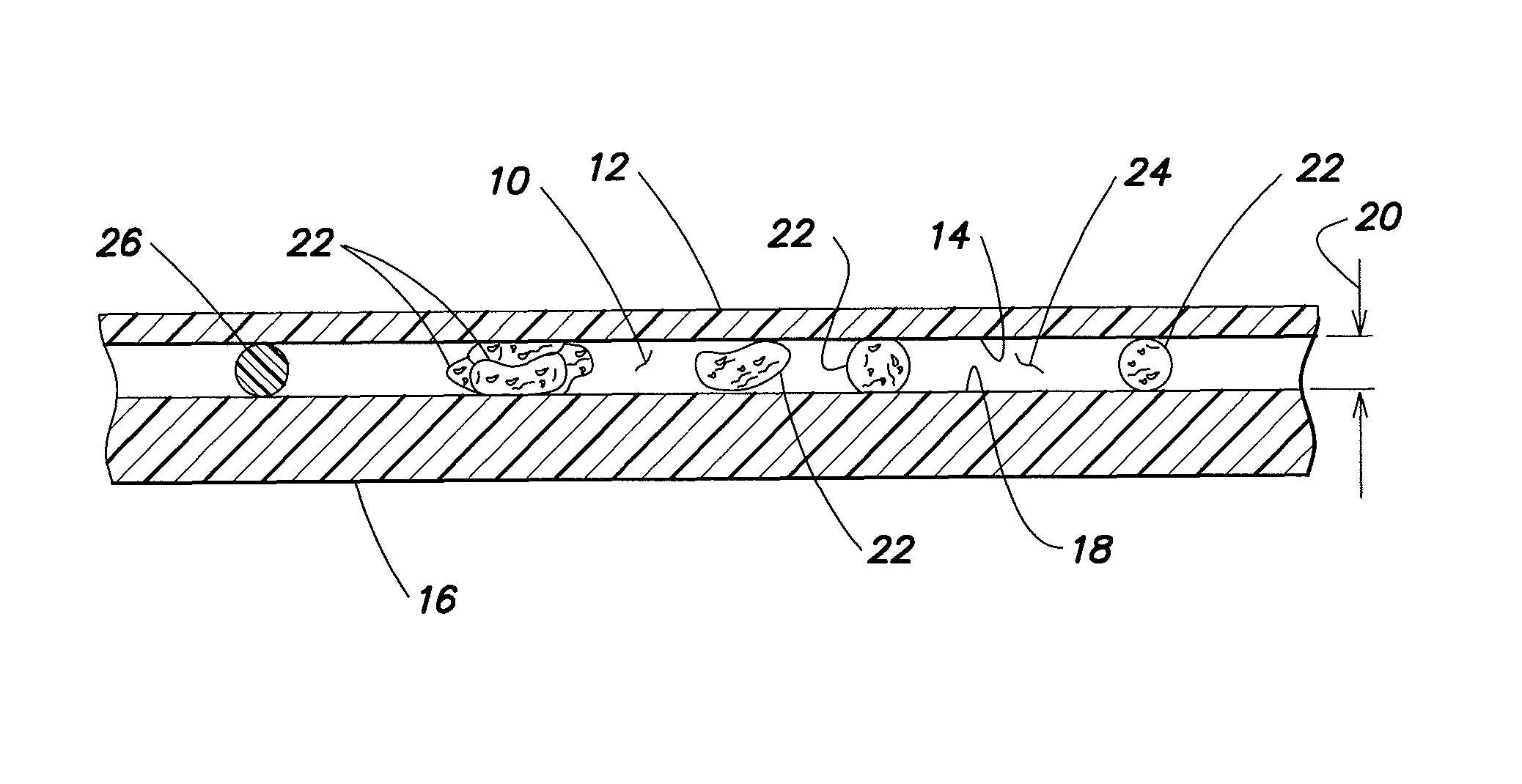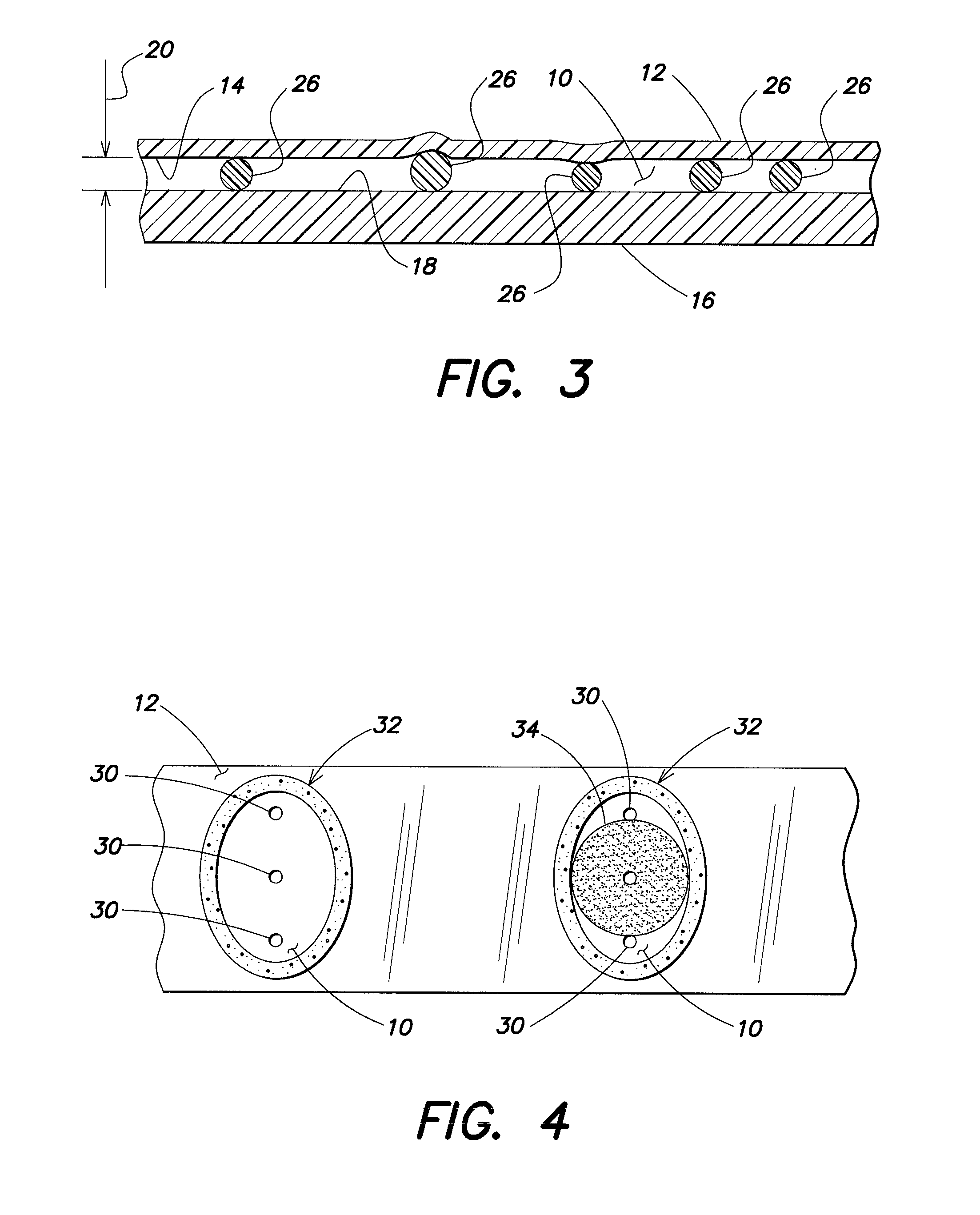Method for measuring the area of a sample disposed within an analysis chamber
a technology of analysis chamber and sample, which is applied in the field of methods for analysis of biologic fluid samples, can solve the problem of difficulty in accurately dispensed sample amounts
- Summary
- Abstract
- Description
- Claims
- Application Information
AI Technical Summary
Benefits of technology
Problems solved by technology
Method used
Image
Examples
Embodiment Construction
[0019]The present invention provides one or more methods for determining the area of a biological fluid sample quiescently residing within an analysis chamber. Depending on the analysis, the sample area itself can provide desirable, useful information. In other analyses, the area can be used to determine the volume of the sample within the chamber; e.g., where the chamber height is known or is determinable, the sample volume sample can be determined using the area and the known or determinable height of the chamber.
[0020]The present method(s) can be performed with an analysis chamber that is operable to quiescently hold a biological fluid sample (e.g., a sample of substantially undiluted anticoagulated whole blood) for analysis. The chamber is typically sized to hold about 0.2 μl to 1.0 μl of sample, but the method is not limited to use with any particular chamber volume, and the chamber volume can vary to suit the analysis application. In those instances when the present method is ...
PUM
 Login to View More
Login to View More Abstract
Description
Claims
Application Information
 Login to View More
Login to View More - R&D
- Intellectual Property
- Life Sciences
- Materials
- Tech Scout
- Unparalleled Data Quality
- Higher Quality Content
- 60% Fewer Hallucinations
Browse by: Latest US Patents, China's latest patents, Technical Efficacy Thesaurus, Application Domain, Technology Topic, Popular Technical Reports.
© 2025 PatSnap. All rights reserved.Legal|Privacy policy|Modern Slavery Act Transparency Statement|Sitemap|About US| Contact US: help@patsnap.com



